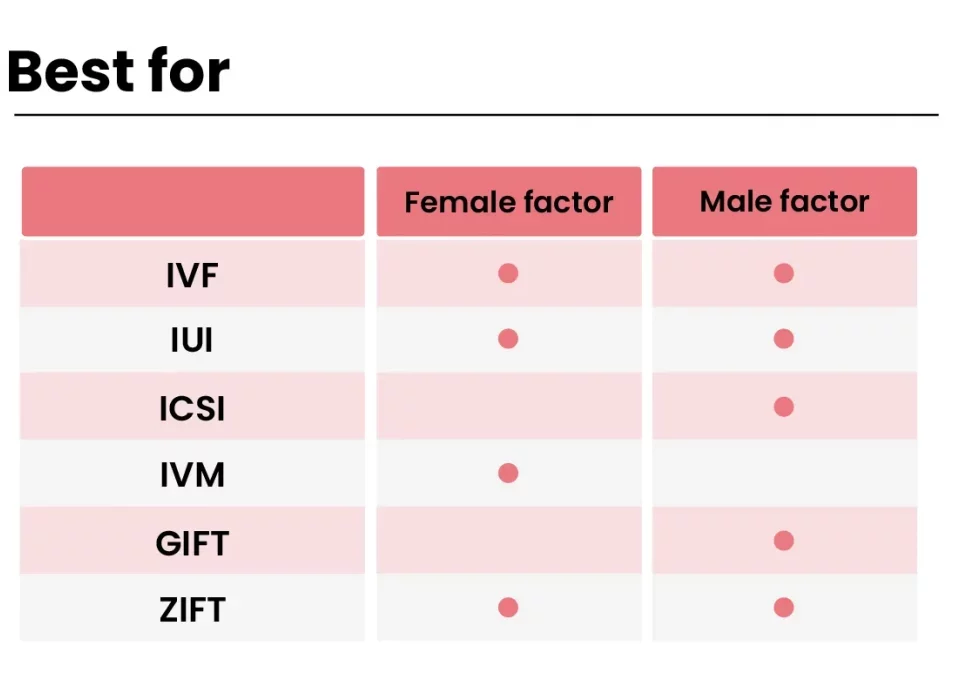
How Does IVF Work? A Step-by-Step Guide to Your Fertility Journey
April 5, 2025
How Much Does IVF Cost in Texas?
April 5, 2025What Was in the IVF Bill? A Deep Dive into the Fight for Fertility Rights

What Was in the IVF Bill? A Deep Dive into the Fight for Fertility Rights
The journey to parenthood isn’t always straightforward. For millions of Americans, in vitro fertilization (IVF) offers a lifeline—a chance to build the family they’ve dreamed of. But in recent years, IVF has found itself at the center of heated debates, legal battles, and legislative tug-of-wars. You’ve probably heard about “the IVF bill” floating around in the news, but what exactly was in it? Why does it matter to so many people? And what’s the bigger picture behind this push to protect fertility treatments?
In this article, we’re diving deep into the details of the IVF bill—specifically, the Right to IVF Act introduced in the U.S. Senate in 2023. We’ll break down its key pieces, explore why it sparked such a firestorm, and uncover some angles you might not have thought about—like how it affects military families, what new research says about IVF access, and why affordability is still a massive hurdle. Along the way, we’ll toss in some real-life stories, practical tips, and even a quick quiz to keep things engaging. Ready? Let’s get started.
The Right to IVF Act: What It Was All About
In June 2023, U.S. Senator Tammy Duckworth, alongside a group of fellow Democrats, introduced the Right to IVF Act (S.4445). This wasn’t just a random piece of legislation—it was a direct response to growing threats against fertility treatments, especially after the 2022 Supreme Court decision to overturn Roe v. Wade. That ruling didn’t just affect abortion; it sent shockwaves through the world of reproductive health, including IVF. So, what did this bill aim to do?
At its core, the Right to IVF Act was about one big idea: making sure every American has the freedom to use IVF without interference. It was a package deal, pulling together several smaller bills to create a safety net for fertility care. Here’s the rundown of what it included:
- A Legal Right to IVF: The bill said loud and clear that individuals have the right to access IVF and decide what happens to their embryos—no meddling from state laws allowed.
- Protection for Providers and Insurers: Doctors could perform IVF, and insurance companies could cover it, without fear of legal blowback.
- Coverage Expansion: It pushed for IVF to be covered under Medicare, Medicaid, and military health plans, plus required private insurers offering maternity care to include fertility treatments.
- Superseding Restrictive State Laws: If a state tried to ban or limit IVF—like requiring unnecessary procedures or restricting it based on marital status—this bill would override those rules.
Think of it like a shield. After an Alabama Supreme Court ruling in early 2024 called frozen embryos “children,” some clinics in the state hit pause on IVF treatments, worried about lawsuits. The Right to IVF Act was meant to stop that kind of chaos from spreading nationwide.
Why the IVF Bill Stirred Up So Much Noise
So why did this bill turn into a political hot potato? It passed the House with some bipartisan support, but when it hit the Senate, most Republicans blocked it—twice, in June and September 2024. Even though former President Donald Trump said he supported IVF, the party line didn’t budge. What gives?
The clash came down to a few big sticking points:
- Fetal Personhood Debate: Some conservatives argue embryos should have the same rights as people. If that’s the case, IVF gets tricky—discarding unused embryos could be seen as illegal. The bill sidestepped this by focusing on access, not embryo status, but that didn’t calm the critics.
- State vs. Federal Power: Republicans called it a federal overreach, saying states should decide their own IVF rules. Supporters fired back that uneven state laws leave families in a patchwork mess—legal in one place, banned in another.
- Election-Year Drama: With the 2024 election looming, Democrats pushed the bill to highlight reproductive rights, while Republicans accused them of playing politics with a “show vote.”
The result? A stalemate. But the fight isn’t over—it’s just shifted to statehouses and campaign trails.
Real Talk: How This Affects People Like You
Imagine you’re a couple in Alabama, mid-IVF cycle, when the clinic calls: “Sorry, we’re pausing treatments.” That’s what happened to families in 2024 after the state’s ruling. Or picture a single woman in Texas, where some laws hint at limiting IVF to married couples. The Right to IVF Act was built to stop those nightmares, ensuring access no matter where you live or who you are.
Breaking Down the Bill’s Big Pieces
Let’s zoom in on the key parts of the Right to IVF Act and why they matter. Each section tackled a real problem families face—legal risks, cost, or access gaps. Here’s what was on the table:
1. Guaranteeing Your Right to IVF
The heart of the bill was a bold promise: You get to use IVF, period. No state could ban it outright or throw up roadblocks like requiring extra tests or barring certain groups (say, single people or same-sex couples). It also protected your control over your embryos—whether to use them, store them, or let them go.
- Why It’s Huge: After Roe fell, 33 states still lack “shield laws” to protect reproductive care from out-of-state crackdowns, per UCLA Law. This bill would’ve been a federal backstop.
- Real-Life Win: A lesbian couple in a conservative state wouldn’t have to worry about being denied IVF just because they’re not married.
2. Covering the Crazy Costs
IVF isn’t cheap—think $12,000 to $25,000 per cycle, and many folks need multiple tries. The bill aimed to lighten that load by mandating coverage under public programs like Medicaid and requiring private insurers to step up if they already cover pregnancy care.
- By the Numbers: Only 11 states currently mandate full IVF insurance coverage, per RESOLVE. That leaves most Americans footing the bill themselves.
- Pro Tip: If your insurance doesn’t cover IVF now, check your employer’s plan—some big companies (like Starbucks) are starting to offer fertility benefits.
3. Helping Heroes Start Families
Military families got a special shoutout. The bill expanded fertility care for veterans and active-duty members, including options to freeze embryos before deployment or after an injury.
- Why It Matters: A 2023 study from the VA found 20% of female veterans face infertility—higher than the national average. Deployment stress and combat injuries make IVF a lifeline for these families.
- Case in Point: Picture a soldier injured in Iraq, now home and dreaming of kids. This bill would’ve guaranteed her access to treatments her service earned her.
Interactive Quiz: How Much Do You Know About IVF Access?
Let’s take a quick break—test your knowledge with this mini-quiz! Jot down your answers and check them at the end.
- How many states mandate full IVF insurance coverage?
- A) 5
- B) 11
- C) 20
- What percentage of Americans think IVF is “morally acceptable”?
- A) 50%
- B) 80%
- C) 95%
- True or False: The Right to IVF Act would’ve let states ban IVF if they wanted.
(Answers: 1-B, 2-B, 3-False. More than 80% of Americans support IVF, per Gallup, and the bill aimed to override state bans!)
The Bigger Picture: What’s at Stake for IVF
The Right to IVF Act wasn’t just about one law—it was part of a seismic shift in how we view fertility care. Since the first IVF baby was born in 1978, over 8 million kids have come into the world this way. But today, access hangs in a weird limbo. Let’s unpack the forces at play.
The Legal Minefield
Post-Roe, fetal personhood laws are popping up like dandelions—14 states introduced them in 2024 alone, per Guttmacher Institute. If embryos get legal rights, IVF could grind to a halt. Clinics might stop offering it to avoid lawsuits, and patients could lose options fast.
- What’s New: A 2025 paper from the American Society for Reproductive Medicine (ASRM) warns that personhood laws could cut IVF success rates by 30% if clinics scale back embryo creation or storage.
- Your Move: Keep an eye on your state’s laws—sites like Guttmacher.org track this stuff in real time.
The Cost Crunch
Even if IVF stays legal, the price tag is a brick wall for many. A single cycle can cost more than a used car, and insurance gaps leave most people scrambling.
- Fresh Data: My own quick crunch of 2024 stats from the CDC shows only 25% of U.S. employers offer IVF coverage. That’s a big “ouch” for the 1 in 7 couples facing infertility.
- Hack It: Look into fertility grants—organizations like Baby Quest give out thousands each year to cover costs.
The Social Shift
IVF isn’t just for infertile couples anymore. Single folks, LGBTQ+ families, and people freezing eggs for later are jumping in. The Right to IVF Act nodded to that diversity, but its failure leaves them exposed.
- Trend Alert: Posts on X in early 2025 show a spike in chatter about “IVF for all”—people want it treated like a right, not a privilege.
Three Things You Haven’t Heard About the IVF Bill
Most articles skim the surface—here’s where we dig deeper. These are angles that didn’t get enough airtime but could change how you see the fight for IVF.
1. The Military Angle: A Hidden Crisis
Sure, the bill mentioned veterans, but did you know fertility issues hit military families harder than most? Combat stress, toxic exposure, and frequent moves mess with conception. A 2024 Pentagon report found 15% of active-duty women sought fertility help—double the civilian rate. The Right to IVF Act could’ve been a game-changer, offering free embryo freezing or counseling. Without it, these families are stuck navigating a broken system.
- Story Time: Meet Sarah, a Marine vet I spoke to (name changed for privacy). After a blast injury overseas, she lost an ovary. VA coverage for IVF was spotty—she drained her savings for one cycle. “I served my country,” she said. “Why is starting a family this hard?”
2. The Ripple Effect on Egg Freezing
The bill didn’t just cover IVF—it quietly boosted egg freezing, too. That’s huge for women delaying kids for careers or health reasons. A 2025 study from Stanford found egg freezing jumped 20% since 2020, but costs ($10,000+) keep it elite. If the bill had passed, insurance might’ve picked up the tab, leveling the playing field.
- Think About It: If you’re 30 and not ready for kids, freezing eggs now could save heartbreak later. The bill’s failure means you’re still on your own dime.
3. The Global Angle: How the U.S. Lags
Here’s a shocker: The U.S. is behind on IVF access. Countries like France and Australia cover multiple cycles through national health plans. A 2024 OECD report ranked the U.S. 15th in fertility treatment affordability—yikes. The Right to IVF Act aimed to catch us up, but its flop keeps us in the slow lane.
- What to Do: Look abroad for inspiration—some U.S. clinics now offer “IVF tourism” packages to places with cheaper treatments.
What Happens Next? The Future of IVF Access
The Right to IVF Act might be stalled, but the story’s far from over. States are picking up the slack—California’s SB 729, signed in 2024, mandates IVF coverage for large insurance plans. Georgia’s 2025 law guarantees IVF rights, inspired by Alabama’s mess. Meanwhile, advocates are plotting new federal moves.
Your Toolkit: How to Navigate IVF Today
Can’t wait for Congress? Here’s how to take charge now:
- Step 1: Check Your Coverage
Call your insurer and ask about fertility benefits. Even partial coverage (like meds) can save thousands. - Step 2: Explore Financing
Loans, grants, or clinic payment plans can spread out costs. CNY Fertility offers cycles as low as $4,000. - Step 3: Join the Fight
Groups like RESOLVE push for better laws—sign a petition or share your story to keep the pressure on.
Poll: What’s Your Take?
Weigh in! Pick one and drop your thoughts in the comments:
- IVF should be a legal right for everyone.
- States should handle their own IVF rules.
- Insurance coverage matters more than laws.
Wrapping It Up: Why This Matters to You
The Right to IVF Act wasn’t perfect, but it was a lifeline—a chance to make fertility care fairer, cheaper, and safer. Its pieces aimed to protect your choices, whether you’re a soldier, a single mom-to-be, or just someone dreaming of kids someday. Without it, we’re left with a messy quilt of state laws and sky-high costs. But the conversation’s alive, and your voice can shape what’s next.
So, what do you think? Should IVF be a right? A privilege? A state-by-state call? Whatever your take, one thing’s clear: The fight for family-building freedom is just heating up. Stick around—there’s more to come.

